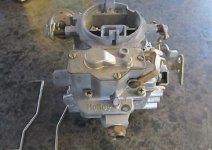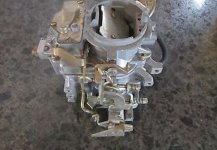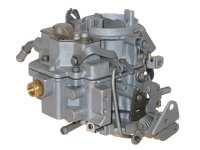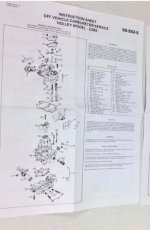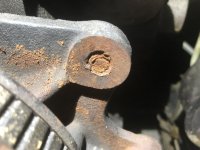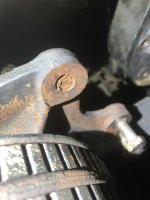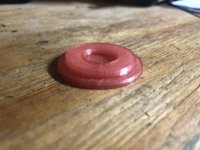Electrical 1985 CJ7 needs a lot of help
AndyCJ7
Jeeper
I have a 1985 CJ7 that's had some modifications done to it by previous owners. The engine and mechanicals are mostly stock but all the emissions components have been removed.
The wiring is a complete mess. There are free wires hanging in the engine bay, zip ties holding some things in place, wires outside of looms everywhere, etc. Most of the lights work, except for one of the front turn signals (it's not the bulb). The voltmeter gauge works. There are aftermarket mechanical gauges that don't work, and the factory oil pressure gauge has been replaced with a printed piece of paper. There's an aftermarket tach that works and the speedometer moves but I haven't driven it enough to know how accurate it is.
The vacuum system in the Chilton's manual looks pretty complex, but mine looks a lot different. I have a single vacuum line to the distributor and nothing else. There are no EGR solenoids, charcoal canisters, or anything else. The fuel vapor return system is gone as well.
It has a duraspark-II ignition - I'm pretty sure, at least. The white wire that connects to the ignition module seems to be one of the wires that ends in the engine bay. It's not connected to anything. I'm not sure what it's supposed to be connected to but it seems to run fine without it.
I've driven it around on some short trips. Fuel drains back into the tank pretty quick so if it sits for a few days it takes a bit to start. I drove it once about 20-30 minutes and it just lost power and died and wouldn't restart. It kind of seemed like vapor lock to me. Once it cools off it's fine. How likely is it that the missing fuel vapor system is why it doesn't like to run for too long?
I would like to upgrade to power brakes. Does anyone have any information on converting to the teardrop style intake to make room for the booster and master cylinder (without spending a ton of money)? I also notice that the front brake line from the master has been replaced (with a hand-bent, coil-less piece) and the rear one looks pretty weak in places. I probably will replace the whole brake system. Any tips/advice on that?
The wiring is a complete mess. There are free wires hanging in the engine bay, zip ties holding some things in place, wires outside of looms everywhere, etc. Most of the lights work, except for one of the front turn signals (it's not the bulb). The voltmeter gauge works. There are aftermarket mechanical gauges that don't work, and the factory oil pressure gauge has been replaced with a printed piece of paper. There's an aftermarket tach that works and the speedometer moves but I haven't driven it enough to know how accurate it is.
The vacuum system in the Chilton's manual looks pretty complex, but mine looks a lot different. I have a single vacuum line to the distributor and nothing else. There are no EGR solenoids, charcoal canisters, or anything else. The fuel vapor return system is gone as well.
It has a duraspark-II ignition - I'm pretty sure, at least. The white wire that connects to the ignition module seems to be one of the wires that ends in the engine bay. It's not connected to anything. I'm not sure what it's supposed to be connected to but it seems to run fine without it.
I've driven it around on some short trips. Fuel drains back into the tank pretty quick so if it sits for a few days it takes a bit to start. I drove it once about 20-30 minutes and it just lost power and died and wouldn't restart. It kind of seemed like vapor lock to me. Once it cools off it's fine. How likely is it that the missing fuel vapor system is why it doesn't like to run for too long?
I would like to upgrade to power brakes. Does anyone have any information on converting to the teardrop style intake to make room for the booster and master cylinder (without spending a ton of money)? I also notice that the front brake line from the master has been replaced (with a hand-bent, coil-less piece) and the rear one looks pretty weak in places. I probably will replace the whole brake system. Any tips/advice on that?

